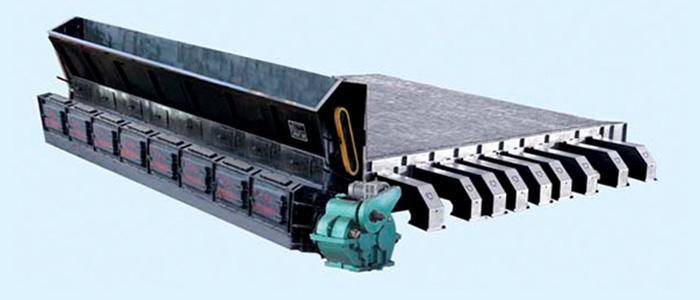
YONGNING
NEWS CENTER
Working principle of a traveling grate chain stoker
Release Time:
Jul 16,2025
A traveling grate stoker is a commonly used mechanized combustion device in industrial boilers. Its operating principle revolves around fuel conveyance, segmented control of the combustion process, and structural characteristics, featuring high combustion efficiency and stable operation. The following details the core structure, workflow, and key principles:
I. Core Structure and Function:
The core structure of a traveling grate stoker uses beams as a load-bearing foundation, combined with chains, grate bars, and a transmission mechanism, forming a continuously operating "conveyance - combustion" platform:
Beams: Usually made of high-strength steel sections (such as I-beams), arranged at intervals along the width of the grate, they are the main load-bearing structure of the grate bars, ensuring the overall stability of the grate during operation.
Grate Bars: Laid on the beams, they are connected by chains into a continuous loop-type track structure. Fuel (such as coal) is placed directly on the grate bars and moves with the grate. Gaps between the grate bars allow for ventilation (supplying air needed for combustion).
Chains and Transmission Mechanism: The chains connect the beams and are driven by a motor through a reduction gear, driving the entire grate bar to move slowly and continuously, achieving automatic fuel conveyance.
Air Chamber: The area below the grate is divided into several independent air chambers. By adjusting the air intake of each air chamber, the oxygen supply for different combustion stages of the fuel can be controlled.
II. Workflow: The "Four-Stage Combustion" Process of Fuel:
The working principle of a traveling grate stoker is essentially that the fuel moves with the grate, successively completing four stages on the grate: preheating and drying, volatile combustion, coke combustion, and burnout. The specific process is as follows:
Fuel Supply and Preheating and Drying (Front End of Grate)
Raw coal falls from the coal hopper onto the front end of the grate (the starting position of the grate), at which point the grate slowly moves backward. The fuel at the front end of the grate comes into contact with the high-temperature flue gas in the furnace (from the rear combustion zone), the moisture is evaporated, completing preheating and drying, preparing for subsequent combustion.
Volatile Combustion (Front Middle Section of Grate)
As the grate moves, the dried fuel enters the high-temperature zone (furnace temperature can reach 800-1000℃), and the volatiles in the fuel (such as methane and hydrogen) are ignited and begin to burn violently, releasing a large amount of heat. At this time, sufficient air (primary air) needs to be supplied through the lower air chamber to support the complete combustion of volatiles.
Coke Combustion (Rear Middle Section of Grate)
After volatile combustion, the remaining solid coke continues to burn on the grate, which is the main stage of fuel heat release. Because the coke combustion speed is slow, the air volume of the air chamber in this area needs to be adjusted (increasing the oxygen supply), and the high temperature of the furnace is used to maintain combustion, while the gaps in the grate bars ensure that air penetrates the coke layer evenly.
Burnout and Ash Removal (End of Grate)
When combustion is nearing completion, the fixed carbon in the fuel is basically burned out, and the remaining ash moves with the grate to the end of the grate, falling into the ash hopper by gravity or an ash removal device, completing ash removal. At this time, the air supply in this area can be reduced to avoid excessive air carrying away heat.
III. Key Principles: "Movement + Zonal Control" Improves Combustion Efficiency:
Continuous Conveying and Mechanized Operation: The continuous movement of the grate achieves the automation of fuel supply, combustion, and ash removal, eliminating the need for frequent manual stoking, suitable for continuously and stably operating industrial boilers (such as steam boilers and hot water boilers).
Zonal Air Distribution and Combustion Control: Through segmented air supply from the air chamber, the air volume is precisely adjusted according to the oxygen demand of different combustion stages of the fuel (for example: less air in the drying stage, more air in the combustion stage, controlled air in the burnout stage), reducing heat loss and improving combustion efficiency.
Structural Stability Guarantee: The rigid support of the beams allows the grate to withstand a relatively thick fuel layer (usually 100-150mm), and it is not easy to deform during operation, suitable for coal types with relatively uniform particle size (such as bituminous coal).
Summary:
Traveling grate stokers, through the principle of "continuous grate movement to convey fuel + segmented air distribution to control combustion stages," achieve automated and efficient combustion of fuel from preheating to burnout, and are widely used in industrial heating and power generation. Its core advantages lie in stable operation, high combustion efficiency, and easy cooperation with the boiler's heating surface (such as water walls and superheaters) to fully utilize the heat of combustion.
Previous:
RELATED INFORMATION
How to choose a Manufacturer for grate production
Apr 01,2024
Precautions for Using the Grate
Mar 07,2024
The difference between reciprocating chain grate and biomass reciprocating grate.
Feb 15,2024
Photo News






